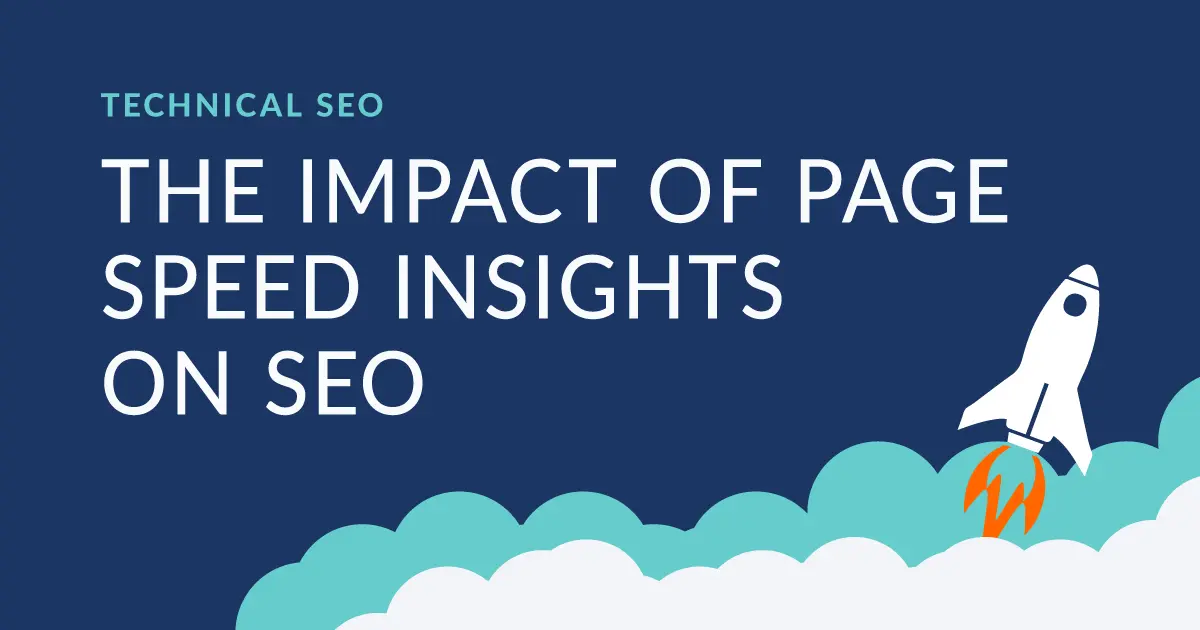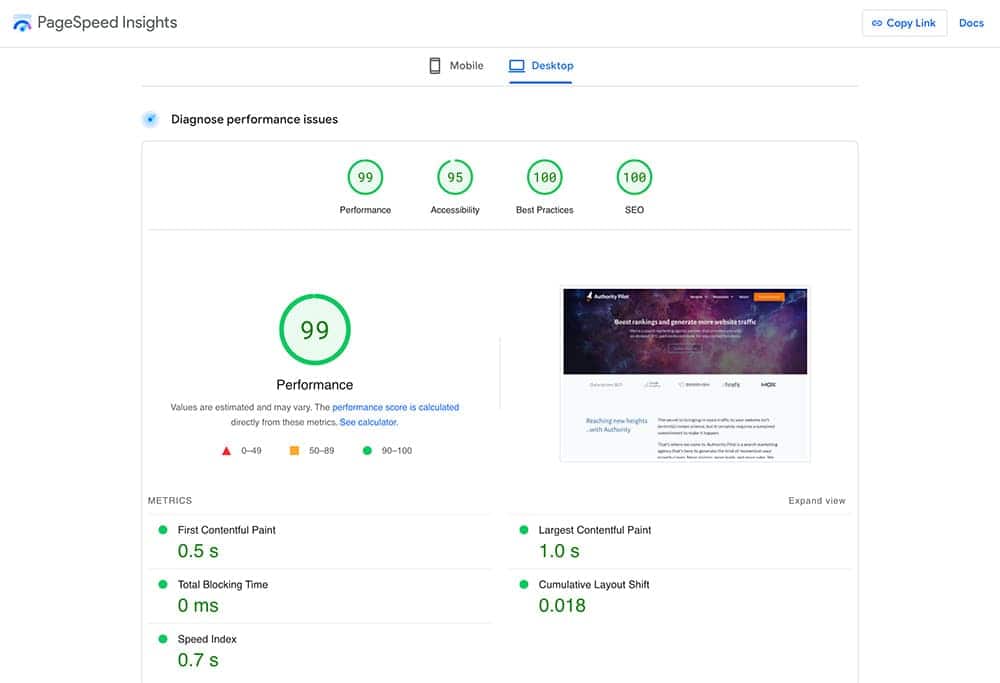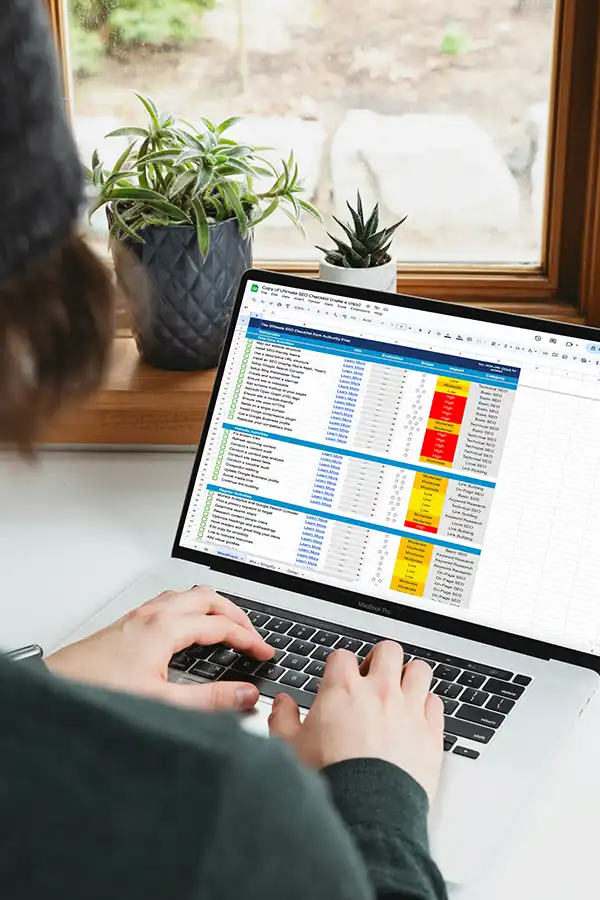
In the blink of an eye, a slow-loading website can turn visitors away. This quick loss of interest hurts your site’s SEO and erodes trust among your audience. Enter Google’s Page Speed Insights – a powerful tool that helps speed up your site, enhancing both user experience and your site’s visibility on search engines. And while it notably affects your SEO rankings, it also has an impact on conversion rates and thus, the bottom line of your business.
Understanding SEO and Its Core Components
Search Engine Optimization, or SEO, ensures that your content not only resonates with your audience but also shines brightly amidst search engine results. Defined as the duration for a webpage to display its full content, page speed has ascended from mere convenience to a cornerstone of user experience. Search engines, led by Google, elevate pages that provide swift access, recognizing speed as a hallmark of quality and relevance.
How Page Speed Insights Improves SEO
Google has unmistakably indicated that, looking ahead, page speed will take precedence, underscored by its emphasis on the Core Web Vitals metrics.
These vitals offer a quantitative glimpse into a page’s health, highlighting aspects like loading performance, interactivity, and visual stability. By optimizing these elements, websites can vastly improve user experience, which in turn, positively impacts SEO.
Google’s algorithms now weave page speed into the very fabric of ranking criteria, underscoring the symbiotic relationship between a page’s velocity and its visibility in search results.
How to Quickly Test Your Site’s Speed
Starting on the path to a better website begins with understanding its current speed. Google’s Page Speed Insights is an excellent tool for this. Simply enter your website’s URL to receive a report in moments. This valuable report doesn’t just give your site a speed score; it provides targeted advice for speeding things up.

For a step-by-step guide on conducting your site speed test and implementing improvements, visit our comprehensive SEO guide for beginners. Here, you’ll find practical tips that can make your website faster, more engaging, and more effective at keeping visitors’ attention.
Practical Steps to Utilize Page Speed Insights for SEO Enhancement
Improving your website’s SEO starts with enhancing its speed. Here’s how you can use Page Speed Insights to boost your site’s performance.
Conducting Initial Page Speed Diagnostics
The journey to a faster website begins with understanding where you stand. By entering your site’s URL into Google’s Page Speed Insights, you receive a comprehensive report similar to the above image in order to evaluate your site’s speed on both mobile and desktop. This diagnostic tool offers a clear snapshot of your site’s performance, highlighting areas that need attention and providing a baseline for measuring improvement.
Implementing Recommendations from Page Speed Insights
Once you’ve got your Page Speed Insights report, it’s time to roll up your sleeves and start optimizing. The report breaks down specific areas where your website can improve, from image compression to code minification.
Optimizing Images
Images are often the heaviest elements on a page. By compressing images and using modern formats like WebP, you can drastically reduce their file size without sacrificing quality. This step alone can significantly improve your page load times, making your site more appealing to both users and search engines.
Leveraging Browser Caching
Browser caching is a technique that stores parts of your website locally on visitors’ devices on their first visit, so subsequent visits are much faster. Implementing this involves adjusting your site’s HTTP headers to set appropriate expiry times for your resources. It’s a relatively simple change that can have a profound impact on repeat visit speeds.
Reducing Server Response Time
The time it takes for your server to respond to a browser request is crucial. Improving server response time involves a range of actions, from choosing a better hosting provider to optimizing your server’s configuration and reducing the bloat on your webpages. Every millisecond counts, and small improvements here can lead to better user experiences and SEO outcomes.
Continuous Monitoring and Iterative Improvements
SEO and website optimization are not one-time tasks but ongoing processes. Regularly use Page Speed Insights to monitor your site’s performance and iteratively make improvements. Keep abreast of new optimization techniques and technologies, and be prepared to adapt your strategy to maintain and improve your site’s speed over time.
By following these practical steps and continuously striving for better performance, you’ll not only enhance your site’s user experience but also its position in search engine rankings. Remember, a faster site leads to happier users and better SEO — a win-win situation for any website owner.
Overcoming Challenges in Page Speed Optimization
The path to optimizing page speed is not devoid of hurdles. Websites may grapple with legacy systems, bulky code, or unwieldy content, each posing distinct challenges. Yet, with a steadfast commitment to best practices and a nuanced understanding of web dynamics, these obstacles can be surmounted. Prioritizing critical fixes, embracing modern web technologies, and fostering an ethos of performance culture within web development teams can transform these challenges into stepping stones for SEO success.
Adapting to Evolving Algorithms and User Expectations
As search engines refine their algorithms, the emphasis on page speed as a critical ranking factor is only expected to intensify. These technological advancements, coupled with users’ growing demand for instant access, signify a future where the speed at which a page loads could be the deciding factor in its online success. To thrive, websites must prioritize not just content quality but also the efficiency with which that content is delivered. Keeping an eye on Page Speed Insights updates and adapting to these changes is essential for staying competitive.
Staying Ahead in the SEO Game
By fostering a culture of continuous improvement and leveraging the latest insights from tools like Page Speed Insights, you can ensure your site not only meets but exceeds the expectations of both search engines and users. Embracing this forward-thinking approach is key to securing a prominent place in the search engine results pages (SERPs).
Conclusion
Page Speed Insights emerges not merely as a diagnostic tool but as a beacon guiding websites towards enhanced user experiences and SEO efficacy. In the vast expanse of the internet, where attention is fleeting and patience thin, speed can spell the difference between obscurity and prominence. By harnessing the insights and recommendations offered by this powerful tool, webmasters and SEO strategists can ensure their sites not only meet but surpass the modern web user’s expectations, securing a coveted spot in the search engine’s limelight.















